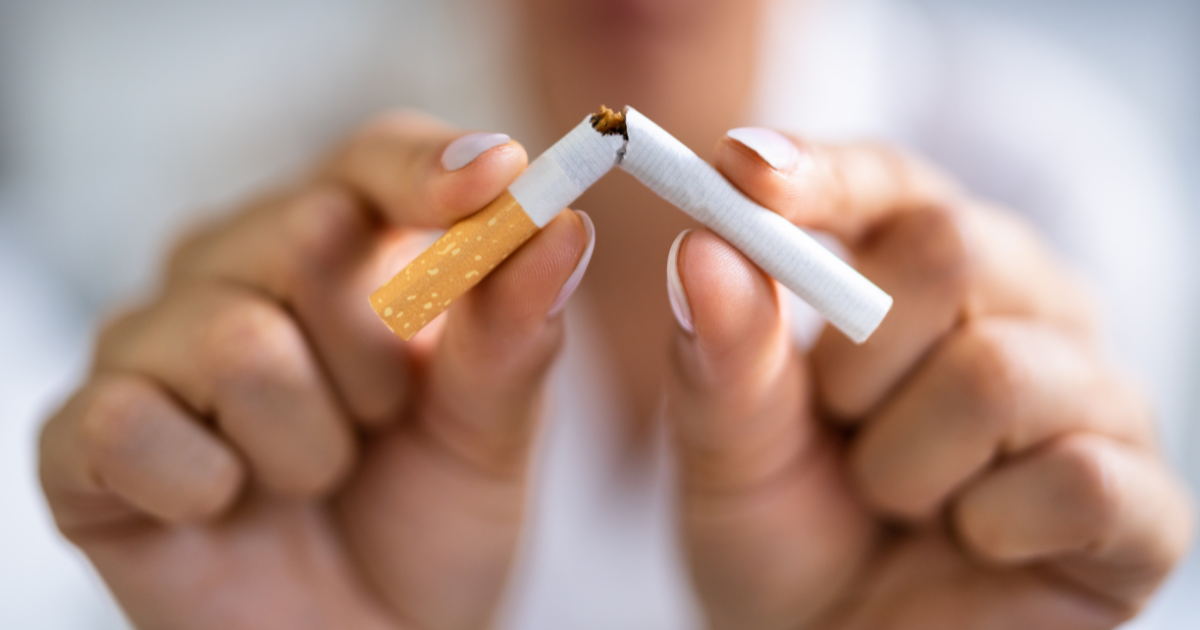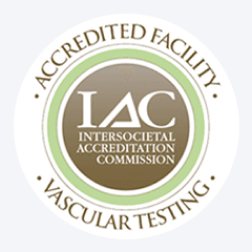Every cigarette does more than damage your lungs, it directly harms your arteries and puts your entire vascular system at risk. Smoking is one of the leading causes of artery damage, making conditions like peripheral artery disease (PAD), atherosclerosis, and even stroke far more likely.
The chemicals in tobacco smoke trigger inflammation, cause plaque to build up, and narrow the arteries, limiting healthy blood flow. Over time, this raises the risk of serious and sometimes life-threatening complications.
The good news? Quitting smoking can quickly start to reverse some of this damage. Blood pressure begins to improve within weeks, circulation gets stronger, and your risk of heart attack and stroke steadily decreases.
If you’re a smoker, or recently quit, it’s important to understand how smoking impacts your vascular health and what steps you can take to protect yourself. This article breaks down the risks, explains the warning signs, and highlights the powerful benefits of quitting.
Understanding Vascular Health and the Role of Arteries
Vascular health is vital for maintaining overall wellness. It involves the proper functioning of blood vessels, which transport blood throughout the body. Healthy vessels ensure organs and tissues receive the oxygen and nutrients they need.
Arteries are the blood vessels responsible for carrying oxygen-rich blood from the heart to the rest of the body. They play a crucial role in maintaining blood pressure and circulation. Their flexible walls adjust to the flow of blood, ensuring efficient distribution.
When arteries are damaged or obstructed, it can lead to serious health issues. Understanding the role of arteries is essential for recognizing the impact of behaviors like smoking. An impaired vascular system can result in:
- Increased blood pressure
- Reduced blood flow
- Higher risk of cardiovascular diseases
Maintaining artery health involves healthy lifestyle choices. Regular exercise, a balanced diet, and avoiding smoking are key. These efforts can protect your arteries and enhance vascular health, reducing the risk of disease.
How Smoking Damages Arteries and Blood Vessels
Smoking inflicts significant harm on arteries and blood vessels. The chemicals in tobacco smoke are particularly destructive. They damage the inner lining of arteries, known as the endothelium. This damage plays a critical role in the development of atherosclerosis.
Atherosclerosis is the buildup of fatty deposits, or plaques, within arteries. Plaque formation causes arteries to narrow and harden over time, restricting blood flow. As a result, the heart must work harder to pump blood, increasing cardiovascular strain.
Smokers often experience elevated blood pressure and heart rate. The toxic compounds in cigarette smoke contribute to these changes, heightening vascular risk. High blood pressure is a significant factor in the development of many vascular diseases.
These damaging processes underscore the necessity of quitting smoking. By understanding how smoking affects your arteries, you can appreciate the importance of cessation. Protecting vascular health is key to improving overall well-being and preventing serious health conditions.
The Link Between Smoking and Vascular Diseases
Smoking is closely linked to a range of vascular diseases. This connection arises from the harmful effects of smoking on blood vessels. When blood vessels become damaged, the risk of developing serious conditions increases.
One major disease is atherosclerosis, where arteries become clogged and stiff. This makes blood flow difficult, raising the risk of heart attacks and strokes. Peripheral artery disease (PAD) is another condition linked to smoking.
Smoking is also a significant risk factor for stroke. Blood flow to the brain can be severely disrupted, leading to potentially life-threatening consequences. Additionally, smoking may contribute to an increased risk of abdominal aortic aneurysm.
Recognizing these risks highlights the importance of quitting smoking. Reducing or eliminating smoking can dramatically improve vascular health. Making informed choices today can prevent future health complications.
Chest Pain and Chest Tightness: What Smokers Need to Know
Experiencing chest pain is a serious concern for smokers. It can be a sign of underlying cardiovascular issues. Smoking narrows and hardens arteries, which can lead to coronary artery disease. This condition often results in chest pain or discomfort, especially during physical exertion.
After quitting smoking, some individuals report chest tightness. This sensation may be the body’s response to the absence of nicotine. While unsettling, it often lessens over time as the body adjusts. However, persistent or severe chest pain should not be ignored.
It’s essential to differentiate between temporary discomfort and more severe symptoms. Serious chest pain requires medical evaluation. It could indicate conditions needing immediate attention, such as angina or even a heart attack.
Key signs and symptoms to watch include:
- Sudden, severe chest pain
- Pain radiating to the jaw or arm
- Shortness of breath and dizziness
Talking to a vascular specialist can provide reassurance and rule out serious conditions. Addressing concerns and seeking medical advice is crucial for smokers and recent quitters. This proactive approach is vital in protecting your health.
What Happens to Your Vascular System After Quitting Smoking?
Quitting smoking begins a healing process in your vascular system. The benefits start almost immediately. Within hours, your heart rate and blood pressure start to drop. This reduces the strain on your arteries.
As days pass, blood circulation improves. Nicotine is a potent vasoconstrictor—it tightens blood vessels. Without it, your vessels relax and allow better blood flow. This change can lead to significant improvements in overall vascular health.
Weeks into quitting, the lining of your arteries starts to repair. Smoking damages the endothelium, the delicate lining inside arteries. Over time, endothelium recovery reduces plaque buildup. This reduces the risk of atherosclerosis and other vascular diseases.
Each step in this recovery process enhances your vascular health. The risk of serious conditions like stroke and heart attack drops. Embracing these changes empowers you to take charge of your health journey.
How Much Will Quitting Smoking Lower Blood Pressure?
Quitting smoking has a profound effect on lowering blood pressure. The effect starts shortly after you stub out your last cigarette. As nicotine leaves your system, your blood vessels begin to relax. This relaxation results in a noticeable drop in blood pressure.
Consistent, smoke-free living enhances this positive change over time. Many people experience a reduction in hypertension rates. Blood pressure might not return to optimal levels immediately, but improvements continue steadily. Staying smoke-free provides the best chance for long-term vascular health.
Here’s a simple breakdown of what to expect:
- Immediate effects: Heart rate decreases within 20 minutes of quitting.
- Short-term benefits: Blood pressure lowers within weeks.
- Long-term improvements: Continued healthy habits keep levels stable.
Reducing blood pressure is a crucial benefit of quitting smoking. These changes significantly decrease your risk of cardiovascular complications. Each smoke-free day contributes to healthier blood vessels and a healthier life.
Managing Symptoms After Quitting: Chest Tightness and More
Quitting smoking is a significant step towards better health. However, your body may react to the absence of nicotine. Some people experience chest tightness after quitting smoking. This sensation is usually temporary as your body adjusts.
Other withdrawal symptoms might include irritability, anxiety, and increased appetite. These are natural responses to nicotine withdrawal. Knowing what to expect can help you stay focused on your goal.
Steps to Reduce Vascular Risk Beyond Quitting Smoking
Quitting smoking is a monumental first step in reducing vascular risk, but additional lifestyle changes can further enhance your vascular health. Incorporating healthy habits into your daily routine supports a strong cardiovascular system.
Regular exercise significantly benefits your heart and blood vessels. It helps maintain a healthy weight, lowers blood pressure, and improves blood circulation. A balanced diet rich in fruits, vegetables, and whole grains also supports vascular health.
Consider incorporating these steps:
- Limit saturated fats, sugars, and salt.
- Stay hydrated and choose water over sugary drinks.
- Prioritize consistent sleep and manage stress effectively.
By embracing these habits, you boost your vascular health and contribute to a longer, healthier life. Remember, every positive lifestyle change counts towards enhancing your overall well-being.

Taking Charge of Your Vascular Health
Smoking takes a serious toll on your arteries, but quitting offers a powerful path toward repair and renewal. Each smoke-free day improves circulation, lowers your risk of heart attack and stroke, and strengthens your overall health.
At United Vein & Vascular Centers, we’re here to support you in protecting your vascular health. Whether you’re experiencing symptoms like leg pain, swelling, or chest discomfort—or you simply want to understand your risks—our specialists can help.
Don’t wait to take control of your vascular health. Schedule a consultation today and take the first step toward a stronger, healthier future.
Frequently Asked Questions
Chemicals in tobacco smoke damage artery walls, cause inflammation, and promote plaque buildup, which narrows blood flow.
Smoking is strongly connected to peripheral artery disease, atherosclerosis, stroke, and increased risk of heart attack.
Yes. Circulation and blood pressure improve within weeks, and long-term vascular risks decrease the longer a person stays smoke-free.


